- The Wellness Tree1480 Beltress St, Suite 5
Dunedin, FL 34698727-216-6929 Call for appointments & information
- Testimonials
I went to get acupressure because I was past my pregnacy due date, but after the appointment I felt like I was walking on air. I had a lot of energy, my pains were gone, and I realized I needed it more than I really knew. She is understanding and very professional. I would definitely recommend Dr. Graves.
-S.S
Dr. Carrie Johnson is what all physicians should be–knowledgeable, concerned, and caring. She listened and worked with me as an individual. She took me from a life of fear of exacerbating the already constant pain to a life where I can be physically active because the pain can be eliminated by her skilled treatment. Not only did she provide healing with accupuncture to relieve TMJ and radiating nerve pain, she also taught me two simple exercises that extend the effect
... Read more »I am a sr citizen and have been going to Dr. Carrie for a year and am hooked on acupuncture!! She helped me with losing weight and lowering my blood pressure. A great way to stay well and maybe someday all insurance carriers will see to it to cover acupuncture as a medical treatment.
I am a fitness freak: I like cross-country running,cycling, weight lifting, playing basketball and racquetball. But at a certain point I started having severe back pains, spasms and hamstring tightening which sidelined me for quite a while as I tried physical therapy but I did not get immediate relief I was looking for. Then I visited with Dr Carrie Johnson for initial visit and analysis of my condition, at first I was skeptical but Dr Carrie Johnson made me a believer of Acupuncture and Active release techniques. Thanks
... Read more »Let me start by saying I am a certified CrossFit trainer with multiple specialty certifications and I am also a USAW certified Sport Performance Coach. I have dealt with minor injuries before but nothing that forced me to consider some type of rehab or treatment plan. While training high volume or a competition I suffered a low back injury. After months of rest and self prescribed rehab I wasn’t getting back to the shape I wanted and my symptoms persisted.
... Read more » -
Latest Articles:
- • The Best Ways to Protect Your Skin from the Sun This Summer •
- • Savoring Summer with Recipes Using the Best Summer Ingredients •
- • Top 5 Best Staycation Ideas for Summer •
Uncategorized
Dry Cough

Dry, nagging cough keeping you up at night? This recipe will help nourish your throat and stop the cough in it’s tracks.
DRY COUGH PEAR & ALMOND SOUP
5 ripe pears
4 handfuls of raw almonds
2 quarts of water
honey to taste
fresh mint leaves
Cut the pears in half and remove the stem and seeds. Chop into small pieces. Place four handfuls of almonds and fruit in water, Bring to boil, cover and simmer for 15 minutes. Remove from the heat. Add hone and mint to taste. Drink on to two cups daily.
Top Tips for Cardiac Health
The CDC lists the No. 1 killer of men in America as heart disease. Statistics show that 1 in 4 men over 40 will suffer from a cardiac event at some point in their life. Knowing how to prevent heart disease is just as important as knowing the signs of a cardiac event.
Prevention, It’s the Best Medicine
1. 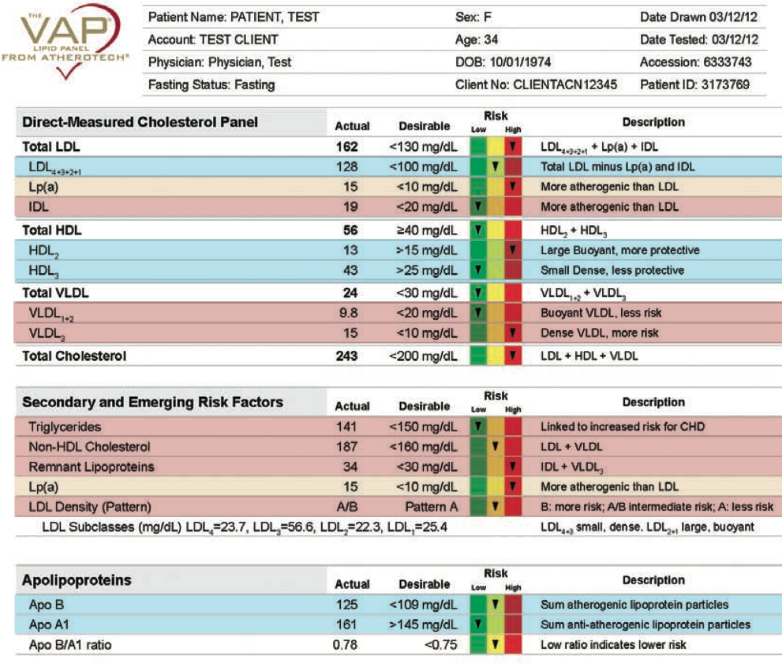 Routine Exams. Work with your physician to monitor your cholesterol, your blood pressure, and your inflammatory markers. I recommend working with Laboratory companies like Atherotech to check lipids. Basic lipid panels (BLPs) are inaccurate and inadequate at assessing residual risk in all patient
Routine Exams. Work with your physician to monitor your cholesterol, your blood pressure, and your inflammatory markers. I recommend working with Laboratory companies like Atherotech to check lipids. Basic lipid panels (BLPs) are inaccurate and inadequate at assessing residual risk in all patient
- 50% of patients hospitalized with coronary artery disease had “normal” cholesterol according to traditional lipid panels
- Patients with diabetes are at increased risk for MI, stroke, amputation, and death
- Diabetes causes metabolic abnormalities that induce vascular dysfunction, which predisposes this population to atherosclerosis
 Diet. A heart healthy diet is something that we’ve been chasing for decades within our country. The truth in the research is that the best food is real, unprocessed, and natural. Eating grassed, organic meats, seasonal vegetables, and local fruits will keep your body healthy and balanced. The inflammation that comes from processed foods directly impacts coronary health
Diet. A heart healthy diet is something that we’ve been chasing for decades within our country. The truth in the research is that the best food is real, unprocessed, and natural. Eating grassed, organic meats, seasonal vegetables, and local fruits will keep your body healthy and balanced. The inflammation that comes from processed foods directly impacts coronary health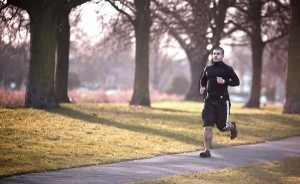 Exercise. We all know we need to exercise more. Changing little habits to make our sedentary lives more active will have a profound effect on your cardiac health. Try to incorporate 3-4 hours a week of walking, jogging, biking, and weight training into your routine. Walking for 15 minutes every lunch break will easily chip away at that goal of 4 hours of added exercise a week.
Exercise. We all know we need to exercise more. Changing little habits to make our sedentary lives more active will have a profound effect on your cardiac health. Try to incorporate 3-4 hours a week of walking, jogging, biking, and weight training into your routine. Walking for 15 minutes every lunch break will easily chip away at that goal of 4 hours of added exercise a week.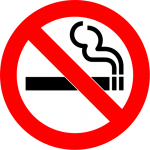
 5. De-Stress.
5. De-Stress.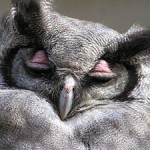 Quality sleep goes a long way in disease prevention and rehabilitation. Shooting for 8 uninterrupted hours of sleep is great goal though there isn’t a magic number for everyone. Sleep requirements vary based on age, disease, stress, and activity levels. Paying attention to your body and having good sleep habits are important in health and wellness.
Quality sleep goes a long way in disease prevention and rehabilitation. Shooting for 8 uninterrupted hours of sleep is great goal though there isn’t a magic number for everyone. Sleep requirements vary based on age, disease, stress, and activity levels. Paying attention to your body and having good sleep habits are important in health and wellness.Alternative Medicine and Breast Cancer
I have a patient that I see every week or so as we work together to bring her body back to balance. She has had a long road recovering from breast cancer and has been a wonderful patient. She is empowered in her health and committed to recovering.
And funny.
C.B., for anonymity, is one of those patients that physicians love to see on the schedule – well, I do anyway. She is informed, passionate, and driven. I asked her to write a piece about her experience with breast cancer because her perspective in complete wellness and care is amazing. This is her journey.
The Diagnosis
I got the call from my doctor’s office telling me I had breast cancer on a warm day in December. When I saw that the call was from the breast specialist’s office I excused myself from a class full of adults that I was teaching and stepped outside. The woman on the other end of the phone said, “Has anyone told you about the result of the biopsy?” I said simply, “no”. “Oh”, she said, “you have cancer: Ductal Carcinoma in Situ (DCIS). Call later to make an appointment with the doctor about your options.”
I became acutely aware of the warmth of the sun on my skin and the gentle movement of my hair in the soft breeze. I was imagining my left breast being removed by a knife: the cutting, the loss of my areola/nipple, the changing of my body from whole to ….. less than whole. I was calm and quiet. I texted close friends the news and then finished out my teaching day. That night I called my best friend who had received the same diagnosis four months earlier. I walked with her through all of the decisions she had to make. She decided on mastectomy with reconstruction and then tamoxifen every day for five years. I knew what I was going to do the moment I was told. I would also have a mastectomy and reconstruction and then tamoxifen every day for five years.
It was difficult to imagine why I would have cancer. I considered myself very healthy:
Weight: 105 lbs
Height: 5’ 2”
Exercise: running, biking, kayaking, weight lifting, walking
Food: green smoothies daily, red wine on occasion, organic vegetables and fruit, meat/fish 2 times a week
Surgeries and treatment
- The first surgery was to remove my breast and then another doctor stepped in to do the reconstruction: insertion of an expander. Once the incision healed the expander would have a needle inserted to fill the expander with 60 cc’s of fluid each visit to stretch the skin. This would allow the use of a silicone implant once the mound was big enough.
- The second surgery was for incision revision because the original incision kept opening and not healing well.
- The third surgery was for expander removal and implant inserted. At the same time I also had my natural breast enhanced to match the shape of the breast reconstruction.
- I began to take tamoxifen 6 months after the initial surgery. I was only able to tolerate it for 11 days because it created a very toxic reaction in my body.
Looking for Answers
I began to explore reasons why I would get cancer. After reading many books and online resources I found that inflammation could cause many ailments including cancer. I had many signs of inflammation besides getting cancer.
-

Geographic Tongue Geographic tongue: my tongue had a thick white coating and at times I had “hot spots”, round and tender areas that would come and go. I also had wavy ridges on the side of my tongue
- Constipation alternating with diarrhea, bloating, flatulence, itchy anus, and severe cramping,
- Irritating rash on my eyelids that would not heal or be relieved by ointments
- Hair loss: 3 inch patch above both ears and peak of hairline
Beginning of healing
A friend recommended I see Sheila Dean, a local Dietician, who did blood testing for food sensitivities. Since my gut was such a mess I thought that would be a good start.
She ordered blood and stool analysis. It was very expensive but I felt that I needed some answers.
Results:
Food sensitivity tests (Mediator Release Test) showed that I was highly sensitive to cow’s milk, cinnamon, soy, almonds, wheat, caffeine, sulfites, MSG and 20 other fruits and vegetables. Once I removed these items from my diet my gut calmed down dramatically.
Stool analysis: highly sensitive to gluten, not digesting food (lacking enzymes), parasite (Blastocystis Hominis). I took medication to kill the parasite and eliminated gluten from my diet.
I still had a ridged, while filmy tongue, rash on my eyelids and now a new symptom arrived: Lichen Planus. Just after my last surgery I found a white growth on my tongue. After seeing a dentist then on to an ear nose and throat specialist and finally a biopsy by an oral surgeon I found out I now had the autoimmune condition.
Chinese medicine
 I knew I needed help. I read somewhere that Chinese medicine helped heal gut issues. Our intestines provide 80 percent of our immunity. Even though the severe symptoms of diarrhea and bloating were resolved my tongue revealed there were still problems. I was disenchanted with western medicine and was ready to explore alternatives. I looked online to find the best doctor that was prepared to help me with my specific issues. After an online search I narrowed it down to Dr. Holly Johantgen. I talked with Elise and shared a bit of my background. She encouraged me to drop off recent blood and stool test results and any other information I was willing to provide. I gave her an inch worth of paper work. Holly took the time to talk with me for thirty minutes by phone about all of my questions and concerns. I was convinced she was the one. I started treatment in January of 2013.
I knew I needed help. I read somewhere that Chinese medicine helped heal gut issues. Our intestines provide 80 percent of our immunity. Even though the severe symptoms of diarrhea and bloating were resolved my tongue revealed there were still problems. I was disenchanted with western medicine and was ready to explore alternatives. I looked online to find the best doctor that was prepared to help me with my specific issues. After an online search I narrowed it down to Dr. Holly Johantgen. I talked with Elise and shared a bit of my background. She encouraged me to drop off recent blood and stool test results and any other information I was willing to provide. I gave her an inch worth of paper work. Holly took the time to talk with me for thirty minutes by phone about all of my questions and concerns. I was convinced she was the one. I started treatment in January of 2013.
Holly suggested I retake the stool test (it had been 6 months since I had last taken it). It revealed the parasite was gone. But, now I had a 2+ YEAST issue and the gluten sensitivity was as severe as someone with crohns disease. The tests also showed a congested liver and spleen.
Even More inflammation!
Another issue began to show up: I was having a problem keeping liquid down. It would seep back into my mouth. An endoscopic test revealed I had inflammation in my esophagus, antrum of the stomach, and proximal duodenum. They called it early Barritt’s syndrome, which is a precursor to esophageal cancer.
The Treatment Plan
Chinese herbs for
- Congested liver and spleen
- Yeast fighter
- Digestive enzymes
- Inflammation reducer
Diet:
- no sugar (whew! This was hard to do!!); organic, clean whole vegetables; chlorophyll, aloe,
Acupuncture
- With each visit I have the opportunity to lay quietly with the needles inserted
In August 2013 I met Dr. Carrie Graves during the transition time when Holly was preparing for her move to Maine. She has continued with the original treatment plan and has added some of her own techniques. 
- I have enjoyed acupuncture. Once the needles are placed and I am left alone to “soak” I breathe deeply to relax and eventually either fall asleep or drift into a dreamy state, which I enjoy. There have been benefits I did not expect. There was a very stiff area in my neck for years. Carrie placed some needles in the area and now that stiffness is gone.
- Cupping. Both Holly and Carrie have used cupping, which has created powerful emotional release every time. It helps clear out strong negative emotions.
- Tinctures. Because my esophagus has not allowed food and water to pass easily to the stomach, tinctures (liquid herbal formulas or supplements) are much easier to get down than pills. I have become accustomed to the taste and really enjoy them.
On My Own
I have felt a need to continue doing as much as I can on my own to help relieve the inflammation. By reading books and researching online I have found many ways to decrease inflammation and help prevent cancer from forming again.
- Mindful breathing.
 Holly shared a book with me called ANGER by Thich Nhat Hanh. It teaches how to handle intense emotions including anger. The method he used is mindful breathing. Reading this book and practicing mindful breathing has been life changing in a positive way. My goal is reduce the stress I feel thereby reducing inflammation
Holly shared a book with me called ANGER by Thich Nhat Hanh. It teaches how to handle intense emotions including anger. The method he used is mindful breathing. Reading this book and practicing mindful breathing has been life changing in a positive way. My goal is reduce the stress I feel thereby reducing inflammation
- Feng Shui
- I had read that the energy around you could impact your own healing. Holly recommended a Feng Shui specialist. Diane Gallin came into my home and made many positive suggestions, which I have followed.
- Exercise
- I continue to walk, bike and lift weights.
- I refrain from running which creates inflammation
- Continue learning to eat cleaner.
- Not eating sugar is very challenging. Yeast is fed by sugar and after 3-4 days without sugar my body craves it. I have broken down and eaten sugar like a mad women- rooting and frantically eating it. I know NOT eating it is what I need to do. It is a HUGE challenge.
- Stay away from the food I am sensitive to- also very difficult especially if I eat out.
- Dr Essylton’s research on diet describes a vegan diet of vegetable, fruit and grains can reverse cancer and coronary artery disease. I continue to improve my diet. I watched his interview on Netflix Forks over Knives recently which reignited my passion for eating cleaner.
- Avoiding synthetic estrogen.
- The cancer I had was fed by estrogen. After reading the book Breasts: a Natural and Unnatural History by Florence Williams, I found out that I was fueling my cancer by using bottled water. The plastic that holds water is made from synthetic estrogen. Also, the tubing that brings water from your house, into the refrigerator and into your ice cube maker and water dispenser is made with synthetic estrogen.
- I now have a Berkley Water Filter which is made of stainless steel to provide clean, uncontaminated water; carry water in a stainless steel water bottle and BPA free Tervis tumblers, use BPA free ice cube trays and keep the cubes in a glass container in the freezer.
- Certain Spanish Red wines can help remove estrogen from the body. But most red wines lead to production of estrogen. I have reduced the intake to wine although when I am with good friends I will drink USDA organic red wine.
- Think Positive Thoughts
- You Can Heal Your Life by Louise L. Hay is filled with positive affirmations and “homework” to reprogram the negative thinking. I have had so many negative thoughts that I know I need to continue reading her book, writing out the affirmations and create new positive neural pathways to my thinking. Currently, I am back in the book again… for the 4th time.
- Avoiding radiation.
- Radiation is the only proven environmental cause of breast cancer.
- I have yet to find 3D ultrasound with CAD CAM to provide evaluation of my natural breast instead of radiation filled mammogram.
- I chose not to have a lumpectomy with radiation because the cancer was on the left breast. I am a cardiac sonographer. I have seen hearts that have been damaged by radiation. It changes the character of the cardiac muscle cells and within 10 years it can cause heart disease.
- Listen to soothing music.
- It actually allows you to breathe away inflammation
- Future Goals

- Qigong-(Chi Kung) means cultivating energy, it is a system practiced for health maintenance, healing and increasing vitality.
- Yoga-It will be great to get back into all the stretching, strengthening and opening up blocked Qi pathways.
The more I read about the causes of breast cancer the more I realize it is a life long journey of numerous environmental factors and a few genetic factors that contribute to the making of cancer. My goal, with Dr. Carrie, is to remove inflammation that I can control in my life. I cannot change the density of my breasts or stop aging but I can address environmental factors like the food I eat and the water I drink and the preventative treatment I pursue. I believe I am in the right place at the right time.
If you have questions or comments and would like to contact the author, C.B., please email the clinic with your contact information and you will be put in touch with her.
Deer Antlers are a banned substance in Pro Sports?
Chinese Medicine has been using different animal products for thousands of years. Deer antlers, or Lu Rong, have been used for knee pain, back pain, and other musculoskeletal problems. In Western Medicine the deer antler velvet has been used as a growth hormone for children with stated growth because it con taints insulin-like growth factor 1 (IGF-1). According to an orthopedic surgeon and founder of NY Bone and Joint in Manhattan, Leon Popovitz, there is preliminary research suggesting that deer antler velvet is useful in healing soft tissue injuries.
WebMD lists a number of conditions other than enhanced athletic performance:
In children, deer velvet is used as a tonic for children with “failure to thrive,” mental retardation, learning disabilities, slow growth, or bone problems including rickets.
In herbal combinations, deer velvet is used to improve athletic performance; to improve eyesight and hearing; to reduce stress; and to treat arthritis, osteoporosis, “tired blood” (anemia), women’s reproductive disorders including premenstrual syndrome (PMS), ED, and skin conditions. Herbal combinations including deer velvet are also used to increase blood circulation to the brain and to delay or reduce signs of aging such as tissue, bone, and muscle degeneration, and declining mental skills.
CNN reports on deer antler spray “giving athletes an edge“.
The use of Chinese Herbs in the Western world isn’t a new concept. When ephedra hit the athletic community in the early 90s it became a controlled and banned substance because it was used as a performance enhancing substance to “speed of the metabolism”. Traditionally, ephedra was used to treat the common cold. Ephedra’s modern application was abused and taken in much higher doses than the traditional prescriptions.
The Baltimore Ravens linebacker, Ray Lewis, has been accused of using deer antler nasal spray for injury rehabilitation.
Where do we draw the line in what is a banned substance? The therapeutic application of ephedra as a performance enhancer was misused and consequently cost the lives of over a hundred individuals.
Deer Antler Velvet, or Lu Rong, is actually being used correctly in this particular application, however. Athletes suffer repeated and serious soft tissue injuries, shouldn’t they be allowed to heal their bodies? What are your thoughts?
Treating Pain from the NY Times!
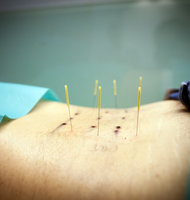
I just posted a yesterday on utilizing acupuncture in the treatment of chronic pain. Today the New York Times published a wonderful article, Acupuncture Provides True Pain Relief in Study, by Anahad O’Connor.
The article is evaluating information published in the Archives of Internal Medicine, financed by the National Institues of Health, on over 18,000 patients suffering from osteoarthritis, migraines and chronic pain.
Dr. Andrew Vickers, researcher at Memorial Sloa-Kettering Cancer Center in New York states “We think there’s firm evidence supporting acupuncture for the treatment of chronic pain.”
The meta-analysis included studies that compared acupuncture with usual care, like over-the-counter pain relievers and other standard medicines. It also included studies that used sham acupuncture treatments, in which needles were inserted only superficially, for example, or in which patients in control groups were treated with needles that covertly retracted into handles.
Ultimately, Dr. Vickers and his colleagues found that at the end of treatment, about half of the patients treated with true acupuncture reported improvements, compared with about 30 percent of patients who did not undergo it.
“There were 30 or 40 people from all over the world involved in this research, and as a whole the sense was that this was a clinically important effect size,” Dr. Vickers said. That is especially the case, he added, given that acupuncture “is relatively noninvasive and relatively safe.”
CT Scans – Dangerous or Worth the Risk?
Recently the dangers of CT scans have been all over popular news sites like NPR and The New York Times. A recent research paper has been published exposing the risks of CT scans resulting in increased risk of cancers, particularly leukemia, in children.

CT scans, or computed tomography, generate 3-D images from multiple 2-D X-Rays taken around a single point. The CT scan was introduced in the 1970s as a tool throughout the medical community to diagnose diseases and abnormalities of the soft tissue that a 2-D X-ray would not be able to discern. CT scans have the ability to show abnormalities in organs, muscles, nerves, tissues (as well as bones), through the use very precise, multiple imaging. Without CT scans it would be very difficult to diagnose early stage cancers, tumors, hemorrhages, strokes, head traumas, or embolisms.
A CT scan is considered a moderate to high radiation risk due to the multitude of X-Rays being taken of one location. This radiation exposure could be 10 to 100 times that of a normal X-Ray. Radiation risk is assessed based on location of the imaging, amount of radiation a person has been exposed to (previous CT, X-Rays, environmental exposures), patient age, patient build (a small child vs an NFL football player), and precision of desired image quality (discerning the border of a palpable tumor vs trying to locate a small cerebral aneurysm).
The research paper suggesting that CT scans create an increased risk of brain cancers and leukemias in children could create a fear based back-lash against this amazing diagnostic tool that could prevent the diagnosis of disease or injury. There are two critical points to remember in regards to this paper.
1. Leukemias are primarily a cancer of children. Suggesting that CT scans foster an increased risk of a cancer that already has a higher incidents in children that do not have CT scans is flawed researching. There is no way, based on the methodology of this paper, to prove that the children exposed to the CT scans would not have leukemia regardless. There are a number of variables to consider. The subject population in the research article were already a sick sample study. These children were included in the study because they had no prior cancer diagnosis but still received a CT scan before the age of 22. This does not account for any other variables that could increase the likelihood of cancer in this population. If anything, it should be more closely inspected because the sample population already had conditions warranting medical intervention.
2. CT scans are a diagnostic tool and not a toy. CT scans have been used in diagnostic medicine more and more frequently in incidents where simple X-Rays, bloodwork, or proper medical intakes would suffice. The Center for Radiologic Research published a paper critiquing the use of CT scans in asymptomatic patients and its relationship to cancers in all patient populations. This research paper suggests that 1/3 of ALL CT scans are unnecessary.
Perhaps it is due to the litigious nature of our society that physicians are using CT scans to diagnose conditions do not warrant the risk of exposure to radiation. Dr. Brenner, director of the Center for Radiological Research at the Columbia University College of Physicians and Surgeons, stated that “young people were often given CT scans to diagnose kidney stones, appendicitis and dental problems, and that some of those scans could have been avoided by using other methods, like ultrasound or conventional X-rays.”
Ultimately, throwing such a revolutionary and invaluable diagnostic tool “under the bus” by using buzz words and headlines creating a fear based environment that CT scans are increasing cancers in children is bad reporting, bad science, and bad press. Unnecessary CT scans are exactly that, unnecessary, and not without their risks. However, it is the invention and implementation of CT scans that will save the lives of young children who would die without the advantages of modern medicine in the diagnosis of many conditions.
When treating my patients I put great emphasis in a thorough medical evaluation with an exhaustive medical history. A good medical history by a trained medical practitioner will steer most patients in the direction of health and well-being. A great medical history will determine whether or not further diagnostic tools are required. It is important in the medical community that physicians do not become complacent in connecting with and listening to their patients. CT scans are not a replacement for good traditional medicine, they are a supplement when more investigation and other diagnostic tools have been exhaustive.
IT Band Pain
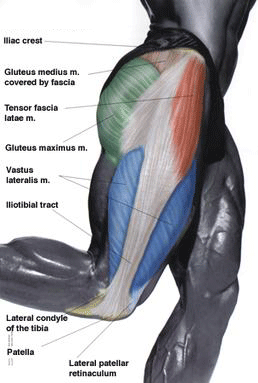
Iliotibial Band Syndrome
It’s the middle of marathon season and a number of my patients have been limping through the door with pain at the outside of their knee or hip. The most common cause of lateral knee pain in runners is Iliotibial Band Friction Syndrome.
Location and Function

The IT band, and the pain associated with it’s inflammation, is the kink in a runner’s stride. The IT band begins at the external iliac crest (Hip Bone) and ends at the lateral condyle of the tibia (outside of the knee on the lower leg). The IT band stabilizes the knee during the stride and is usually aggravated in individuals who are overtraining, overpronating (rolling on the outside your foot when you walk) in their stride, or have oppositional workout to work habits.
This last little bit is seen in someone who is working at a desk the majority of the day then goes for a long run in the evening. The muscles that are long and stretched when running are short and tight when you are sitting for long periods of time. This is also seen clinically in triathletes that are training for long rides on their bikes and then run. In situations like this stretching throughout the day while at your desk is integral in recovery of IT band pain. In cyclists, making sure your bike is properly fitted so your leg extension is appropriate and your toes do not point inward.
WHAT IS GOING ON?! MAKE IT STOP HURTING!
With IT Band Syndrome, ITBS, the IT band is rubbing at the hip or rubbing at the knee and creating an inflammation of the tendon and surrounding tissues. IT band pain may be most noticeably after running, or engaging in the offending activity, for a period of time with the trigger spots being at the outside of the knee, hip or the line connecting the two.
Problems:
•Running around a track, the shoulder of the road, or a banked surface
•Tight muscles, as mentioned for the desk worker
•Increasing Distance, Duration, or Intensity of workout too quickly

•Over-pronanting at the food strike in running
•Toes facing frame in cycling
How do I know if I have a problem?
•Do you have pain when you press along the outside of your thigh with moderate pressure while your leg is extended?
•Do you have a noticeable wear pattern on the outside heel of your running shoe?
•Do you feel like you have a weak core or weak back?
•Is the pain worse midway through your run?
•Do you notice a “snapping hip” where it feels like the muscle or tendon is crossing the outside of your hip can be felt while you run?
•Do you have a slow pace or a short stride?

Treatment
Ok, ok, I have a busted IT band. HELP!
Getting evaluated by a licensed and experienced practitioner can make all the difference in the world with ITBS but there are a few things you can try doing at home first.
- STRETCH (we will come back to proper stretching techniques)
- ICE/HEAT (ice for 20 minutes post workout; use heat prior to workout and after icing)
- ANTI-INFLAMMATORIES
- Getting on a good Omega-3 Fish Oil protocol of approximately 3-4g a day will help mitigate inflammation
- NSAID, like Ibuprofen, can help but may have side-effects to consider
- FOAM ROLL
- THERAPY: Acupuncture, Massage, etc.
- SLEEP: this is when your body heals itself. You have to be getting adequate sleep
- SUPPLEMENTAL THERAPY
- Find an acupuncturist, chiropractor, massage therapist, or physical therapist trained and experienced with athletes
- SOAK in a hot bath with Epsom Salts
Evaluation
Some of the things a practitioner will look for in ITBS are muscle imbalances.
•Hip abductor weakness can cause pain because the thigh bone, femur, has a external force acted on when the foot strikes the ground. This will push out on the hip creating more strain on the IT band if the muscles on the inner thigh aren’t strong enough to prevent excessive force on the outside of the hip
Physical Assessment Tests
•Tight hip flexors (iliopsoas), extensors (gluts), and rotators (piriformis) can all put excessive strain on the muscles of the inner thigh, the hip abductors
•Noble Test: positive test when patient has pain at 30 degrees flexion
•Thomas Test: positive test of the iliopsoas and/or IT Band when the patient can’t achieve 90 of knee flexion and neutral angle of hip flexion in relation to the table

Returning to Activity: Don’t Always Run Through It
Pain is the message our body gives us to knock off whatever we are doing. There is a fine line between discomfort, pain, and injury. Sharp pain needs to be taken seriously and evaluated. Once you feel like you have your pain under control be careful when you return to running. Take the following steps to prevent your return your sport from being painful or premature
- Equipment Check. Make sure your shoes aren’t worn and are appropriate for your foot type
- Muscle Check. Incorporate strength training of the inner thigh, buttocks, and core to ensure proper biomechanics in your stride
- Body Check. Make sure your body is well rested, well hydrated, stretched and not inflamed
- Stride. Overthinking your stride can create more harm than benefit but making minor tweaks to your length and speed can make all the difference
- Train smart. Never increase more than one variable at a time in training
- Distance (mileage), Duration (minutes actually exercising), Terrain (pavement vs. trail vs. track), Intensity (hill workouts vs. normal workouts)
 Augment your stride to prevent exasperation of symptoms.
Augment your stride to prevent exasperation of symptoms.
“The angle of the knee during faster-paced running is beyond the friction point of ITBFS, so the patient should start with easy sprints on even surfaces, no more than every other day at first. The patient may gradually increase distance and frequency according to tolerance. Time to return to sports depends on the initial severity. Patients who return must first perform all strength exercises and stretches without pain. Running Times also suggests running faster as a method of preventing aggravation to the IT band.
Strength Training and Flexibility
Working to rehab or prevent ITBS is a combination of stretching and strength training.
Strength Train:
•Walking Lunges: it’s important to have good form and go to muscle fatigue, not muscle pain. If you’re feeling pain adjust the depth and length of your lunge
•Resistance Band Leg Raises: Lay on your side with your knees bent at a 45 degree angle. Have a snug resistant band around both legs and lift the leg you’re not laying on towards the ceiling. Do approximately 15 reps on each side with 2-3 sets (note that in the video the legs are straight, this an acceptable adjustment)
•Side Steps Resistance Bands: fix the resistant band around your ankles and step sideways, 15 reps on each side with 2-3 sets
•Squat Leg Raise: Stand on the resistant band and go into a squat (remember to not let your knees go over your toes). When you come up from the squat, with alternating legs, bring one leg out to the side. Alternate and do 15 reps on each side with 2-3 sets
Stretch:
Stretching needs to become part of your life, not just before and after runs. If you’re like the majority of the population you are sitting for the majority of your day. Set and alarm to get up EVERY 30 MINUTES and stretch your hips.
Here is a video of good IT Band Stretches
When all else fails, rest. Overtraining an area is not going to make you reach your goals quicker. If a certain run-time or distance is a goal, work on other aspects of your fitness to help you get there while you recuperate your injury. Constantly reevaluate and reassess your training, fitness, and goals. Working with a trained therapist can provide an unbiased and honest opinion of your injury and recovery while facilitating the healing process.

Zombie Unicorn Ants of Chinese Herbal Medicine
I recently asked my followers on my Facebook page to let me know what articles about health, wellness, and chinese medicine they would like to read about. A long time friend made the first comment, “Zombies”. Challenge accepted Dan. Challenge Accepted.
Chinese Medicine has existed for thousands of years and seems to be a separate entity from recognized and more “modern” Western Medicine. Though the concepts, treatments, and ideologies are very foreign to the average person, the method for arriving at the treatment strategies is the exact same as the principles every esteemed modern scientist follows.
Step 1. Observation.
Picture this. A young man, in the mountains of Tibet in the 15th century

happened to look down and notice a long, white unicorn-horn looking thing sticking out of an ant’s brain. This ant was acting very peculiarly. Every ant in the little ant line was heading south, but this unicorn ant broke free from the line and moved towards a small bush. This little unicorn ant started climbing, climbing, climbing until it reached the top of the bush. The ant grasped hold of the tip top brach, held tight, then died.
Our 15th century Tibetan man was shocked by this and since it’s a bazillion years before iPhones, the interwebs, and tv he decided to do a little experimentation. Whatever made that little horn pop out of the ants head, change his behavior, make him branch off from the herd and walk like a zombie away from everything his instincts would have normally dictated might have a very entertaining effect on this our Tibetan. What else does he have going on?
So, Mr. Tibet pops the ant in his mouth and sits back and waits. And waits.

Then all of the sudden he starts noticing a few things. The first thing he notices is that he feels a great sense of happiness (but perhaps he’s just relieved the ant wasn’t poisonous). It seems that we are off to a good start in the observation of the ingestion of the unicorn ant. Secondly, he notices that perhaps due to his good mood, he feels the need to head back in town in search of some female companionship. Could he have found a secret aphrodisiac?! This could make him reach and famous because just like the bigwigs over at Viagra will attest to, sexual health is a billion dollar industry!
What our Tibetan man doesn’t realize is that the ant had been infected by a parasitic fungus known as Cordycepts sinensis, or in Chinese Medicine, Dong Chong Xia Cao. The fungus attacks a host caterpillar or ant, invades the insect and then begins the take-over. Some of the cordyceps species have been known to effect their hosts behavior for their survival which accounts for the zombie-like behavior that our Tibetan man saw.
Our Tibetan man, Zurkhar Nyamnyi Doje, became famous for his discovery and wrote a medicinal text explaining the tonic properties of this little fungus. According to the Materia Medica of Chinese Herbal Medicine, this herb works as an adaptogen to increase energy, enhance stamina, and reduce fatigue. In Western Medicine is is used during organ transplants as an immunosuppressive drug. It is also being researched for it’s anti-cancer properties. Cordyceps has polysacchariedes and cordycepin that have been shown to have anti-cancer components.
Another new area of research worth noting in these large waisted times is cordyceps effects on insulin resistance. Preliminary research have found a hypoglycemic affect from ingesting cordyceps! That little zombie ant might be able to help us fight the battle of the bulge!
Treating conditions with Chinese Medicine isn’t as simple as chasing down zombie ants. Finding a licensed practitioner who can assess and diagnose the root cause of a particular condition is going to dictate the success of the herbs. Who knows, you might not need to be popping zombie ant fungus, you might need some dragon’s blood.
Zombie Herbs.
What am I wearing?!
Vibrams. Just Do It.
I will be the first to admit that I’m not a fashionista by any means – What Not To Wear would have a field day with me. The most recent fashion faux pas that grabs the attention of my clients, the bagger at Krogers, and the random people in line at the post office is my footwear. I’m one of those people sporting the latest trend in athletic equipment, Vibram Five Fingers.
Dear God Why.
When training for the Austin marathon, a few years back, I was experiencing a lot of lateral ankle pain, knee pain, and hip tightness. My IT band was rolling over my hip and creating a really loud “POP” anytime I would stand from a seated position. I had to tape my ankle every time I ran and was popping NSAIDs and fish oils like they were going out of style.
…and then I discovered ugly shoes.
I stumbled upon Vibrams at an REI, Inc and was instantly hooked. Let me explain how they work, why they work, and why some people think they don’t work.
I’m hesitant to jump on the latest bandwagon in the world of diet, exercise, and gimmicks, so I did some research into the Vibrams and uncovered the world of barefoot running (which also introduced me to the Paleo movement, that is another blog, another day). The idea behind the barefoot running ideology is that our bodies evolved to be bipedal with certain caveats to protect itself in the upright position. Namely, the strength and alignment of our feet being the most important because this is the very start of our whole kinetic chain.
Daniel Lieberman, a professor of human evolutionary biology at Harvard University said, “People have been running barefoot for millions of years and it has only been since 1972 that people have been wearing shoes with thick, synthetic heels.”. The devil’s advocate would say, “Well, we didn’t have paved roads either”. CUE THE VIBRAMS! There is a movement of barefoot running that includes b a r e f o o t r u n n i n g. This means NO SHOES. Do you know what dying of tetanus is like? There is no reason, in my opinion, to go militant and run around the streets of NY asking for ringworm, diseases, and injury, just so we can move in a way that is more ancestrally fit.
I digress.
For whatever reason people seem to think that the arches in our feet are some mysterious body part to be treated completely differently from every other muscle, joint and bone. In fact, the arches of the foot are composed of tendons and ligaments connecting the tarsal and metatarsal bones. These soft tissues need to be strengthened, stretched, and exercised just as much as your killer hamstrings or beefy biceps. You would never start benching 200lbs when all you’ve been doing is curls of Miller Light, but you would slowly work up to it. Slowly increasing the strength of your feet will make your WHOLE body stronger.
My feet are strong, aren’t they?
The average person wears 3 pairs of shoes a day. (I made that up.) Think about it though. We wake up, put on some house slippers and walk around like a zombie until we put on our work shoes – high heels, dress shoes. Then we run over to the gym and throw on our sneakers with arch supports because when we run our feet hurt. Then because our bodies are nice and toned we switch to our fancy shoes and go out on the town. How in the world do we expect the muscles in our feet to ever get stronger?
An Olympic high diver jumps off a platform with substantial spring. They aren’t on a concrete slab. Reducing the mobility of our feet, reducing the sensation of our feet to the ground, and changing the biomechanics of our stride is the same as trying to SPRING off a concrete slab. Think of how much more explosive power, endurance, and strength your feet and legs would have if you strengthened your feet to the same powerful output of a spring board!
I have flat feet, I have high arches, my mommy didn’t hug me as a child.
Your feet will adapt. To anything. In fact, our poor footsies have adapted to RUNNING SHOES. It is not normal for our foot to strike heel first in a normal stride and this is only possible with the advent of lots of padding that we can even accomplish this. The natural motion is altered and will then change how the lower leg handles the shock – this translates to stress fractures, shin splints, tendon/ligament.meniscus tears. Le sigh.
Don’t believe me? Check out this video.
I firmly believe that changing your gait will normalize a lot of structural abnormalities and muscular imbalances. Get some. Try them.
Words of Wisdom:
Start slow. At first continue running in whatever shoes you’ve got, slowly acclimate yourself, introduce your feet to the world of working out by walking around the house in the vibrams, then walk the dog, then go on a slow jog. START SLOW.
5 Reasons to Wear Vibram FiveFingers:
http://www.vibramfivefingers.com/
1. Strengthens Muscles in the Feet and Lower Legs—Wearing Vibram FiveFingers will stimulate and strengthen muscles in the feet and lower legs, improving general foot health and reducing the risk of injury.
2. Improves Range of Motion in Ankles, Feet and Toes—No longer ‘cast’ in a shoe, the foot and toes move more naturally.
3. Stimulates Neural Function Important to Balance and Agility—When wearing Vibram FiveFingers, thousands of neurological receptors in the feet send valuable information to the brain, improving balance and agility.
4. Eliminate Heel Lift to Align the Spine and Improve Posture—By lowering the heel, your bodyweight becomes evenly distributed across the footbed, promoting proper posture and spinal alignment.
5. Allow the Foot and Body to Move Naturally—Which just FEELS GOOD.
*For those interested in running in Vibram FiveFingers, please go to our Running page for further information.*
Vibram FiveFingers and Barefoot Running FAQs
www.vibramfiverfingers.com
If my Vibram FiveFingers® hurt while running, should I continue using them?
Minor initial discomfort is not unusual for some individuals, depending on your foot type and running style, but you should not continue if pain persists. Transitioning slowly to build proper strength is imperative when beginning to run in Vibram FiveFingers.
I have always used motion control shoes. Should I drop down into a mid-range shoe before entering into a pair of Vibram FiveFingers®?
While some customers have transitioned successfully using this method, we’ve found that it is not the most effective way to make a transition. More minimal sneakers tend to continue enabling a heel-strike running form, whereas running in Vibram FiveFingers means learning to run on the forefoot. We recommend running first completely barefoot on a hard flat surface. This serves a dual purpose. One, it naturally forces you to run with a very light forefoot strike. Two, it allows your skin to function as a failsafe, so that you don’t push yourself too hard too soon. As you develop a solid forefoot running form you can begin transitioning to Vibram FiveFingers. Slowly building your mileage is critical as your body needs time to build the necessary lower leg strength for forefoot running.
Vibram FiveFingers® do not have a cushioned heel pad. What will that mean to my biomechanics?
In your typical running shoe, the heel is higher than the forefoot. In FiveFingers both the heel and forefoot lie on the same plane, so there is no cushioned heel. If you are a traditional heavy heel-strike runner or walker, you might have a biomechanical change to make, but this change is likely a good one. Humans are not meant to heel strike heavily, particularly when running. Try running without shoes on; you will see what we mean. Running barefoot with a strong heel strike will send you to the sofa to let your bone contusion or fracture heal. One of the goals of Vibram FiveFingers footwear is to encourage forefoot striking, meaning your forefoot will contact the ground first then engage muscles in your feet and lower legs as your heel touches down. This style of running may be safer and lead to fewer injuries, in addition to being biomechanically more sound from an energy and force distribution standpoint. Basically, it is a smarter way to ambulate.
Can I still run in my regular running shoes and use my Vibram FiveFingers® for training?
Yes. Training in Vibram FiveFingers will enhance your proprioception and foot strength and help you run better, especially if you utilize the technique adaptations you learned while using Vibram FiveFingers. That said, if you do continue to use running shoes in rotation with your Vibram FiveFingers, we recommend you seek out flat, thin-sole running shoes that allow you to maintain the good technique you will have learned using Vibram FiveFingers. Many have used Vibram FiveFingers® as a training tool at first, but often make the full switch as their form improves and feet strengthen.
How long until I see results in my training?
A change in your running style (to a more natural forefoot strike) should occur almost immediately, with lasting adaptations within a few weeks. As your form and foot strength improve you will become more adept at forefoot running and therefore be able to increase your speed and mileage. Maintaining a patient outlook is critical in transitioning to Vibram FiveFingers. Remember, you are learning to use a new athletic skill. Many runners will feel driven to regain the mileage they were used to doing in sneakers in a short period of time. Doing so can lead to overuse injuries, because muscles and tendons need sufficient time to build the strength required for running with a forefoot strike. Sticking to a slow, but steady transition will build a strength base for longterm success.
Some transitioning tips:
- Tips on correct forefoot running form can be found here
- Run no more than 10% of your typical running distance for the first 2–3 weeks
- After 2–3 weeks, gradually increase mileage by 10%–20% every couple of weeks
- If you ever start to feel pain during a run, stop! You can always try again in a couple of days
- Never run 2 days in a row for the first month
- Stretch before and after each run, focusing on calves and feet, because Vibram FiveFingers running will stimulate these muscles
- If, after several weeks of training, you are consistently very sore, you need to rest and back-off on your mileage





